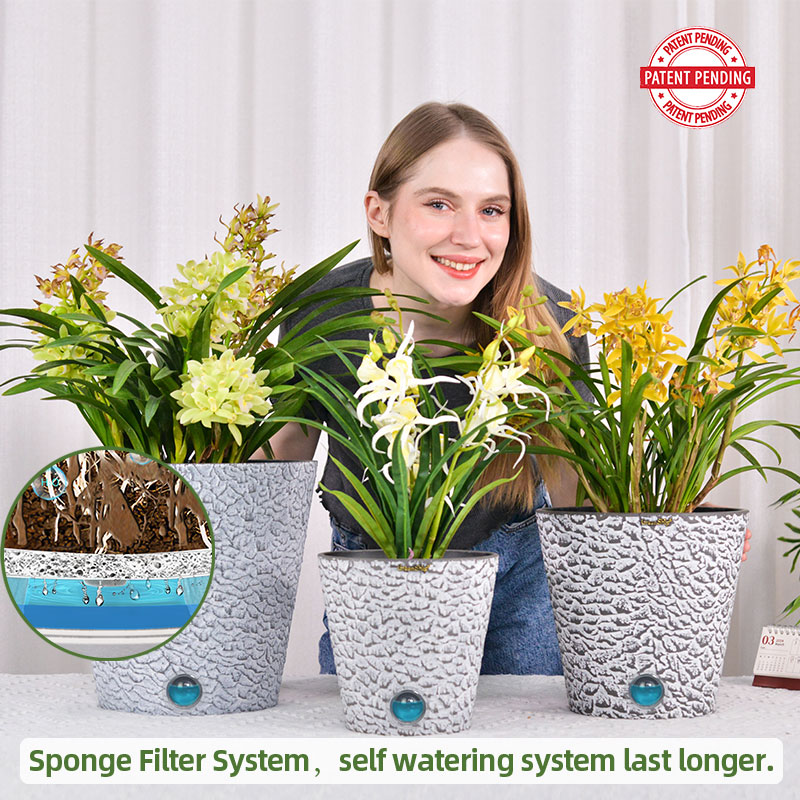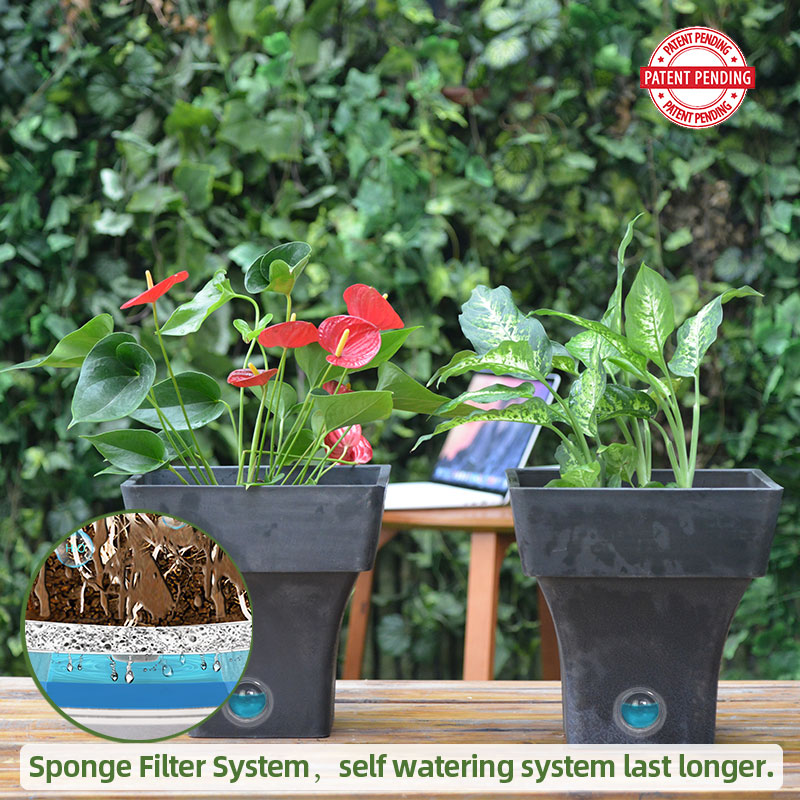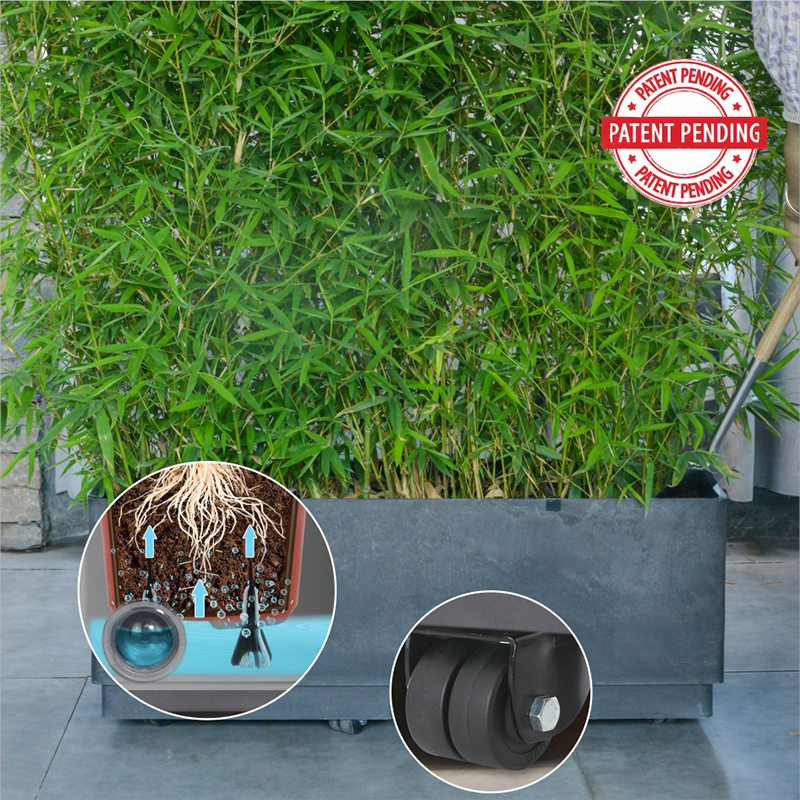What Plants Thrive in Self-Watering Pots?
Self-watering pots are ideal for plants that enjoy consistent moisture but don’t tolerate drying out or overwatering. By providing a steady supply of water through a built-in reservoir, these pots create a favorable environment for certain types of plants. Here’s a list of plants that generally thrive in self-watering pots, along with key characteristics to look for when choosing plants for these systems.
Plants That Thrive in Self-Watering Pots:
1. Tropical Plants:
Many tropical plants thrive in self-watering pots due to their preference for consistently moist soil and moderate to high humidity. These plants naturally come from environments where moisture is abundant, making them ideal candidates for self-watering systems.
- Peace Lilies
- Spider Plants
- Pothos
- Philodendrons
- Bromeliads
- Calatheas
- Ferns

2. Herbs:
Herbs generally thrive with regular watering, and self-watering pots can help maintain the right moisture levels for herbs like basil, mint, and parsley. These plants don’t like their soil to dry out completely, but they also don’t tolerate soggy conditions for extended periods.
- Basil
- Mint
- Parsley
- Chives

3. Vegetables:
Many vegetables, especially leafy greens, benefit from the consistent moisture provided by self-watering pots. These vegetables prefer moist soil, but too much water can cause issues like root rot, so the controlled watering of a self-watering pot is ideal.
- Lettuce
- Spinach
- Tomatoes
- Peppers

4. Flowering Plants:
Flowering plants often thrive in moist conditions, which is why many of them do well in self-watering pots. These plants need consistent moisture for healthy blooms, and a self-watering system ensures they get the right amount of hydration without the risk of overwatering.
- Begonias
- Impatiens
- Fuchsias

Key Characteristics of Suitable Plants:
- Enjoy Consistent Moisture: The most suitable plants for self-watering pots are those that thrive in moist, but not waterlogged, soil. These plants prefer their soil to stay consistently moist but should never be left in standing water, which could lead to root rot. Self-watering pots provide the perfect balance of moisture retention and drainage.
- Moderate to High Humidity: Many of the plants that thrive in self-watering pots, particularly tropical plants, also enjoy higher humidity levels. The self-watering pot helps maintain this moisture, creating a more suitable environment for plants that need extra humidity to flourish.

Important Considerations:
- Plant-Specific Needs: Not all varieties of a given plant will be suitable for self-watering pots. For example, some varieties of basil or tomatoes may prefer drier conditions, and certain tropical plants may have more specific moisture needs.
- Growing Conditions: The suitability of a plant for a self-watering pot can also depend on the growing environment, including temperature, light levels, and the overall care the plant receives. Always consider the specific care requirements of the plant species before deciding to use a self-watering pot.
Conclusion:
Self-watering pots are ideal for plants that enjoy consistent moisture and are tolerant of moderately high humidity. Tropical plants, certain herbs, vegetables, and flowering plants generally thrive in these pots, making them a convenient solution for low-maintenance gardening. By selecting plants that prefer moist, well-drained soil, you can create an environment that promotes healthy growth while reducing the need for frequent watering. Just remember to tailor your plant selection based on the individual needs of each species, and your self-watering pot will be a success.
17PL
By greenship|2024-03-26T01:20:39+00:00March 25, 2024|Categories: Healthy Root Self-Watering System|
M-10FA30
By greenship|2024-03-26T01:19:37+00:00March 25, 2024|Categories: Healthy Root Self-Watering System|
16U100
By greenship|2024-03-26T01:14:51+00:00March 25, 2024|Categories: King Enhanced Feature Landscape Collection|



